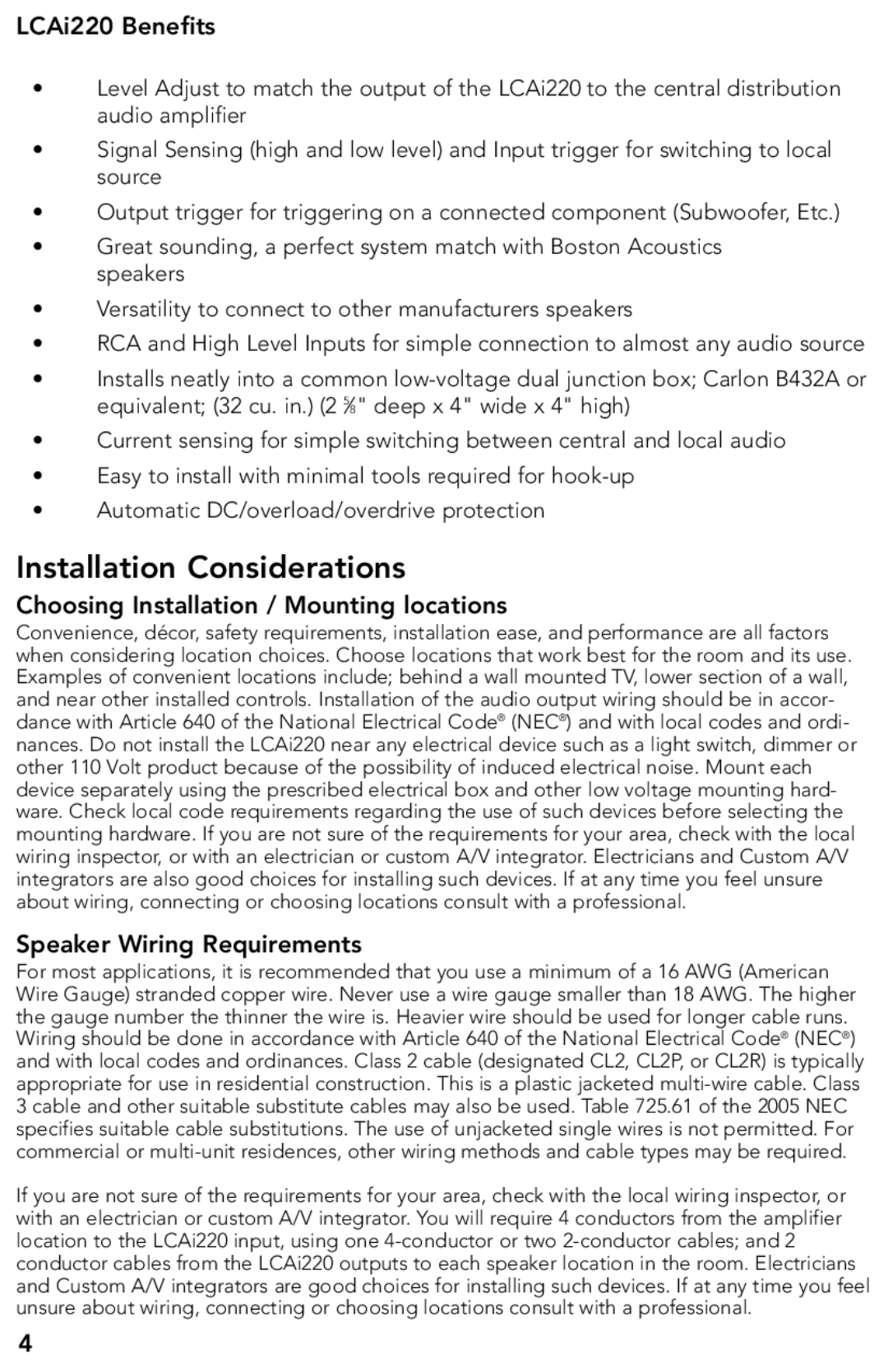LCAi220 Benefits
•Level Adjust to match the output of the LCAi220 to the central distribution audio amplifier
•Signal Sensing (high and low level) and Input trigger for switching to local source
•Output trigger for triggering on a connected component (Subwoofer, Etc.)
•Great sounding, a perfect system match with Boston Acoustics speakers
•Versatility to connect to other manufacturers speakers
•RCA and High Level Inputs for simple connection to almost any audio source
•Installs neatly into a common
•Current sensing for simple switching between central and local audio
•Easy to install with minimal tools required for
•Automatic DC/overload/overdrive protection
Installation Considerations
Choosing Installation / Mounting locations
Convenience, décor, safety requirements, installation ease, and performance are all factors when considering location choices. Choose locations that work best for the room and its use. Examples of convenient locations include; behind a wall mounted TV, lower section of a wall, and near other installed controls. Installation of the audio output wiring should be in accor- dance with Article 640 of the National Electrical Code® (NEC®) and with local codes and ordi- nances. Do not install the LCAi220 near any electrical device such as a light switch, dimmer or other 110 Volt product because of the possibility of induced electrical noise. Mount each device separately using the prescribed electrical box and other low voltage mounting hard- ware. Check local code requirements regarding the use of such devices before selecting the mounting hardware. If you are not sure of the requirements for your area, check with the local wiring inspector, or with an electrician or custom A/V integrator. Electricians and Custom A/V integrators are also good choices for installing such devices. If at any time you feel unsure about wiring, connecting or choosing locations consult with a professional.
Speaker Wiring Requirements
For most applications, it is recommended that you use a minimum of a 16 AWG (American Wire Gauge) stranded copper wire. Never use a wire gauge smaller than 18 AWG. The higher the gauge number the thinner the wire is. Heavier wire should be used for longer cable runs. Wiring should be done in accordance with Article 640 of the National Electrical Code® (NEC®) and with local codes and ordinances. Class 2 cable (designated CL2, CL2P, or CL2R) is typically appropriate for use in residential construction. This is a plastic jacketed
If you are not sure of the requirements for your area, check with the local wiring inspector, or with an electrician or custom A/V integrator. You will require 4 conductors from the amplifier location to the LCAi220 input, using one
4
